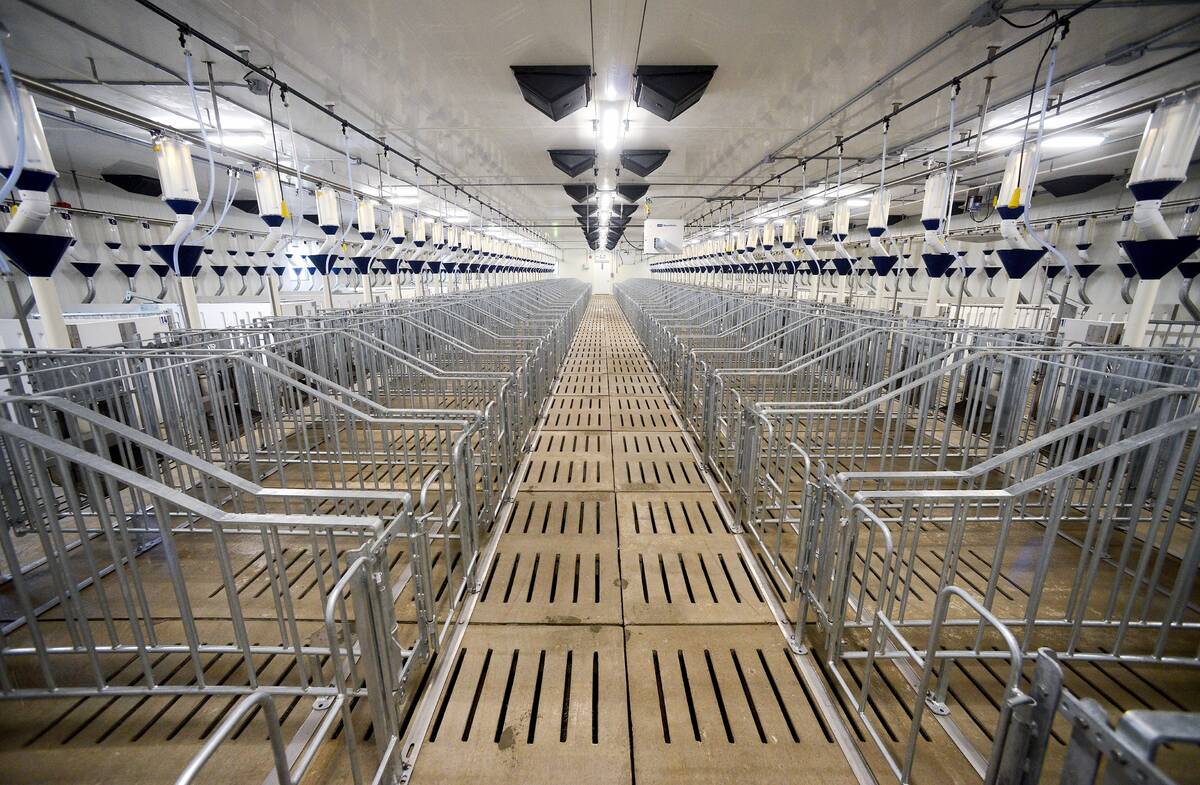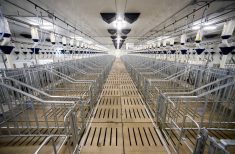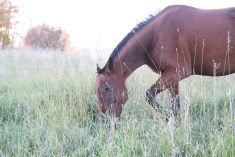Today’s calving operations have some key differences to how the season was approached decades ago. Industry and veterinary knowledge of best practices have changed. That includes a greater focus on things like pain control during calving.
Why it matters: From calving to operations like branding and castration, pain management has become a greater conversation in a beef sector industry looking to improve animal outcomes while also preserving public good will.
Most producers are already somewhat familiar with managing their herd mothers’ pain, but a refresh prior to calving is always a good idea, according Dr. Marc Philippot, a vet with Rolling Plains Veterinary Corporation in St. Claude, Man.
Read Also

Real farm talk on switching to open sow housing
What actually worked for these Prairie pig farmers when it came time to swap gestation stalls in their barns for group sow housing? What were the results?
“These things have been taught for decades. It’s just not everyone gets to learn them the way veterinarians do,” he said.
“It’s just more reiterating it to people.”

A more comfortable delivery generally jumpstarts the odds of a healthy cow and calf that will pair well and start nursing without issue, added Dr. Neil Versavel with Equi-Tech Veterinary in Stonewall, Manitoba.
“There’s definitely options for producers and veterinarians to help with pain control in cattle who are in the birthing process. And I think we do see a benefit from doing it.
“Hopefully we’re seeing cows who experience less pain, who are maybe quicker to get back up, quicker to start nursing their calf to start stimulating their calf and forming that cow-calf bond a lot quicker.”
Injectable or oral meds? It depends
The advent of non-steroidal anti-inflammatory drugs (NSAIDs) has marked a significant change in cattle pain management, lessening pain, inflammation and swelling during calving process, as well as other health issues. The top three NSAIDs Philippot uses include meloxicam (Metacam is a popular generic name), flunixin (Banamine) and ketoprofen (Anafen).
Many NSAIDs are available in both injectable and oral varieties.
Which should the farmer use? Versavel says it’s mostly a matter of syncing up the medication with the producer’s time window and the animal’s condition. As a general rule, oral meds manage pain more slowly than injectables.
“I think, overall, the oral meloxicam works well,” he said. “It’s just you need to allow it more time to work than you would with an injection.”

When to reach for the meds
Probably the easiest way to know you don’t need a painkiller, said Versavel, is if the cow is calving normally and naturally with no signs of distress or discomfort.
If it’s a difficult birth and the farmer or veterinarian has to pull, however, medication may be necessary . Those requiring c-sections or experiencing pre-calving vaginal prolapse or post-calving uterine prolapse should also receive pain control, he said. The same goes for cows that go down giving birth or after the calf is out.
The decision to give the mama cow a post-calving painkiller is often based on the cow’s disposition.
“If these cows are still up on their feet and looking pretty mobile and go to their calf right away, you’re not likely going to need to get pain control to those cows,” said Versavel.
If the calf and cow are having a hard time birthing without intervention, one way to minimize stress and pain to both cow and calf is to — if at all possible — get the calf out quick, he added.
“If you wanted to break it down to brass tacks, the best way to go is you probably give the painkiller first and then attempt to pull the calf. But sometimes in those frantic situations you just want to get down to getting the calf out.”
For c-sections, Versavel usually starts with a pre-surgery dose of anti-inflammatory painkiller prior to clipping and prepping.
“That gives that painkiller time to work its way into the system and have an effect.
“And then, for standing c-sections, it involves some sort of local block with lidocaine, usually a para-lumbar block to block the nerves as they come out of the vertebral column next to the spine, to desensitize the area where we’re going to do the surgery.”
Be cautious with calf pain
For Versavel, pain management for calves is reserved for scouring, pneumonia-stricken or otherwise sick calves.
Because NSAIDs can be hard on a newborn calf’s internal organs, he generally recommends instead opting for corticosteroids such as dexamethasone to reduce inflammation. “We do have to be kind of conscious of using NSAIDs in newborn animals; you can have some negative side effects of NSAIDs such as effects on the kidneys, effects on the digestive tract,” he noted.
But there are cases where it may be necessary to give a calf an NSAID.
Versavel gave an example of a calf that experienced a hard pull. Then, 24 hours after being born, it had difficulty getting up and moving, possibly from trauma to the legs from the birthing process.
“At that point I would advise a client to try something like an NSAID. A lot of the NSAIDs have claims on them down to a very young age, but not always below one week of age and that’s just because we haven’t got the research on how those medications affect those very young calves in their systems,” he said.
If the producer is giving an NSAID to a young calf, he cautioned, that calf should be well-hydrated.

Tips for handling equipment
Medication also isn’t the the be-all and end-all of pain management, vets noted. There’s also the matter of preventing pain in the first place.
It’s crucial to use birthing equipment correctly to minimize the pressure placed on both cow and calf. Good technique can also cut back the need for pain medication, said Philippot.
“We want to be able to put the equipment on properly and also learn how to do the pulling process properly, making sure that everything’s coming the correct way, that we have two legs or that we have two legs and a head — things like that.”
For the calf, it’s important to distribute the pressure from equipment such as calving chains. Citing Don Connor of the University of Missouri, Philippot pointed to the common chain placement advice to place one loop above the fetlock joint and the other around the pastern of the other leg. Traction is applied to the dorsal aspect of the limb.
Using a calf jack can be very handy if a producer or vet is experiencing resistance when pulling the calf, said Versavel. However, be sure to use it in a way that minimizes pain in the animal. That means working with the cow and not forcing the jack.
“The proper way to use it is to use the jack to create tension and then you lever the jack down as you’re going in concert with the cow pushing, to just provide additional force.
“The goal isn’t to just rip the calf out with the jack, for lack of a better word. The goal is to use the jack to provide the cow with assistance in a progressive manner.”
The rule of 10s
When injecting lots of a drug, it’s recommended that producers split doses so the animal is not being given all that volume in the same place. Injecting large doses of meds into a single spot can lead to painful lumps, abscesses or necrotic tissue, said Philippot. They also tend to lower the cow’s meat quality.
The vet uses what he calls the “10 and 10” rule to prevent these possibilities.
“We try to usually [inject] say, 10 millilitres or 10 cc’s of a drug in one site. So if they require 20 [cc], then you’d split it in half: 10 in one [spot], 10 in another.
“If she needs 30, then you’d split it in three: you go 10, 10 and 10. That’s kind of a rule of thumb that we’ve been using with producers. That way we’re decreasing the risk of muscle damage to the area so that we’re keeping meat quality high.”
This method is usually unnecessary for calves, due to the lower dose rate.
















